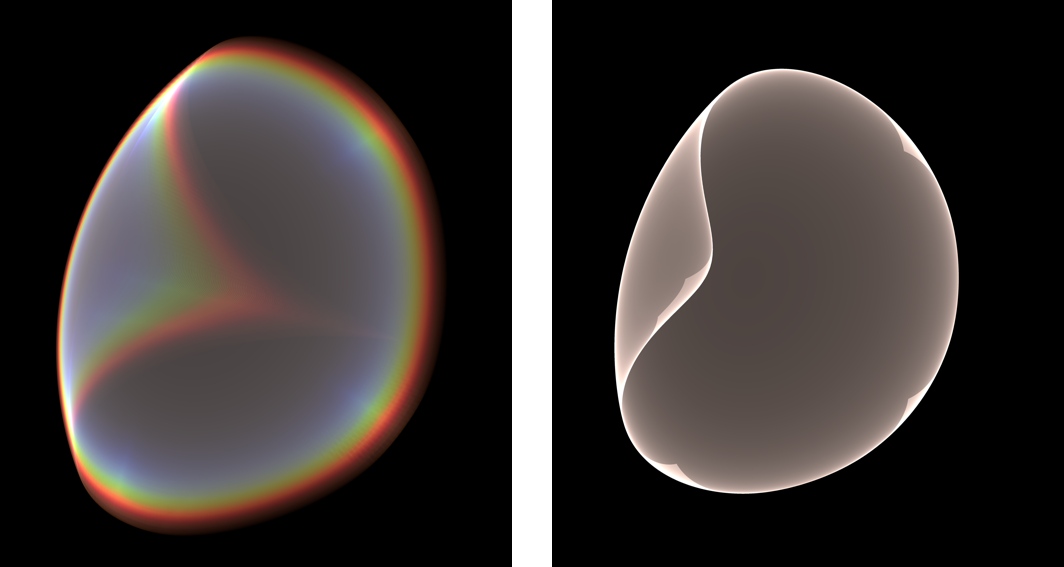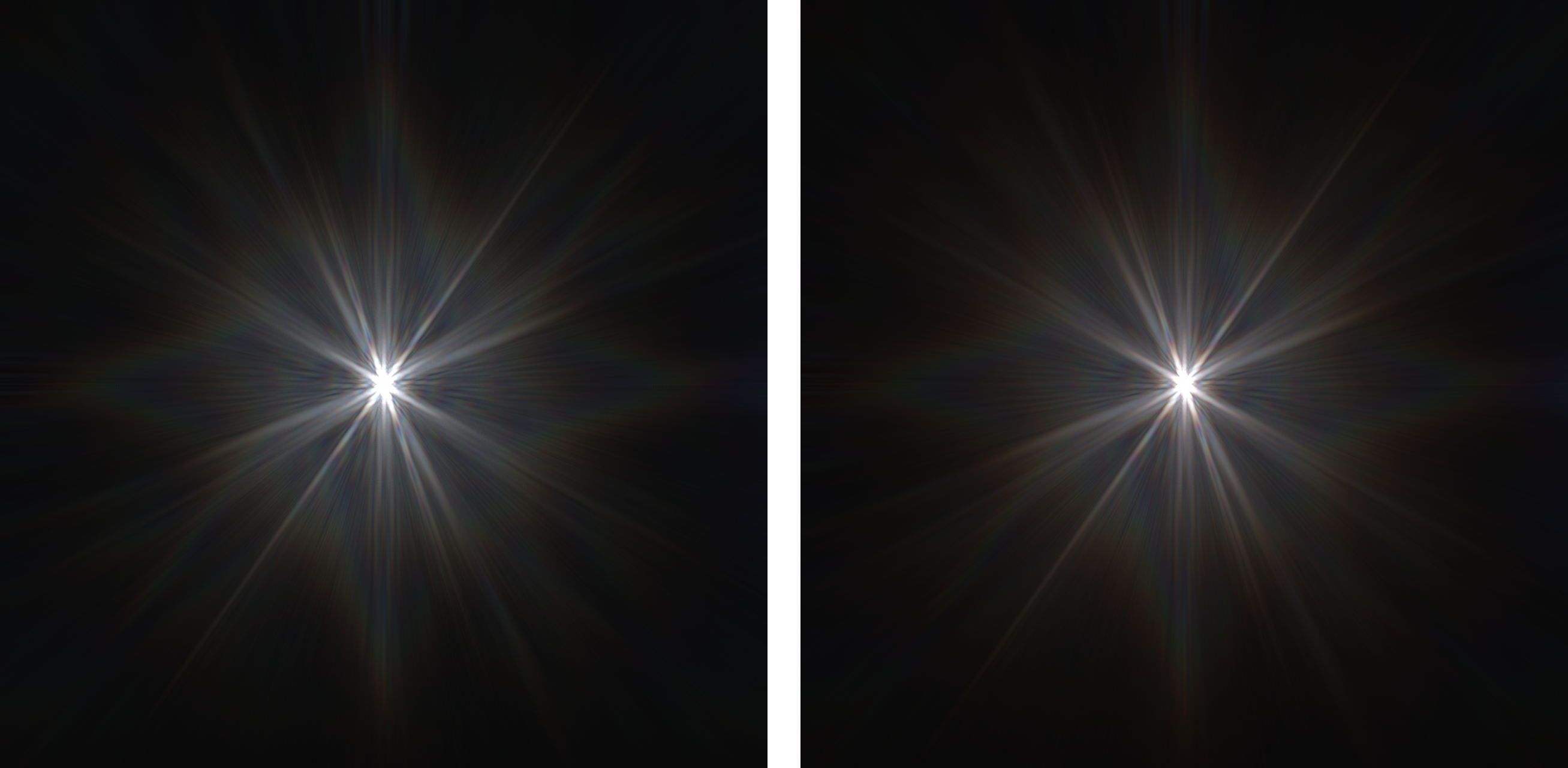General
Spectral Rendering
As opposed to the traditional rendering of a scene, which only takes into account the colors, spectral rendering takes rays of all wavelengths into account to model spectral effects natively.
This is especially important for the rendering of lens flares, as there are many such effects visible. The most visible of which is dispersion on the edges of the ghosts, but many others will be discussed in their respective subsections.
Here is a comparison of a single ghost rendered with (left) and without (right) spectral rendering:

Wavelength to color conversion
Flares Science converts wavelengths to colors using measured data from real camera sensors. This results in a more accurate color mapping, and also additional artistic control over the colors.
Here is a comparison of the same central flare rendered with a Hasselblad H3D (left) and a Leica M8 (right):
